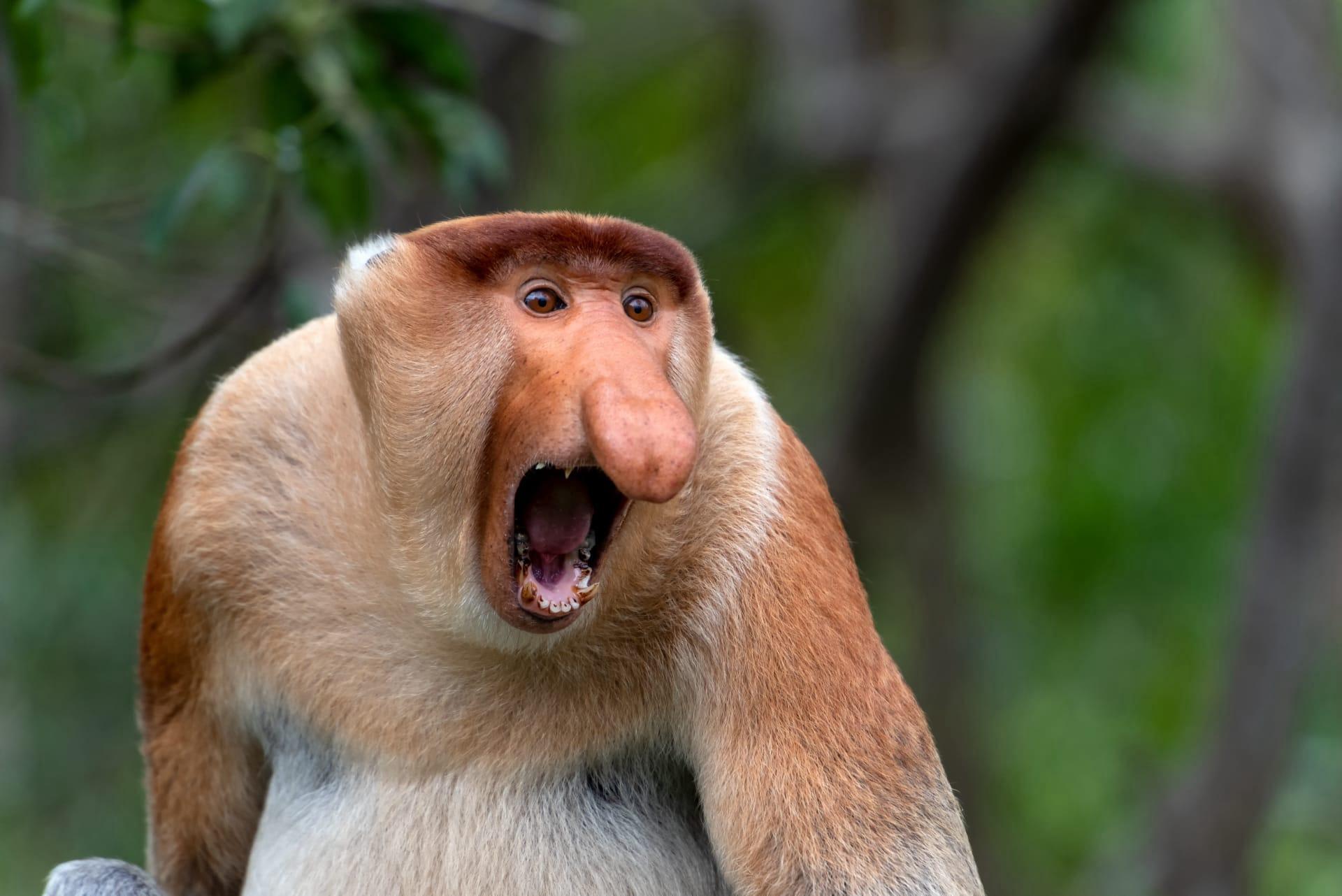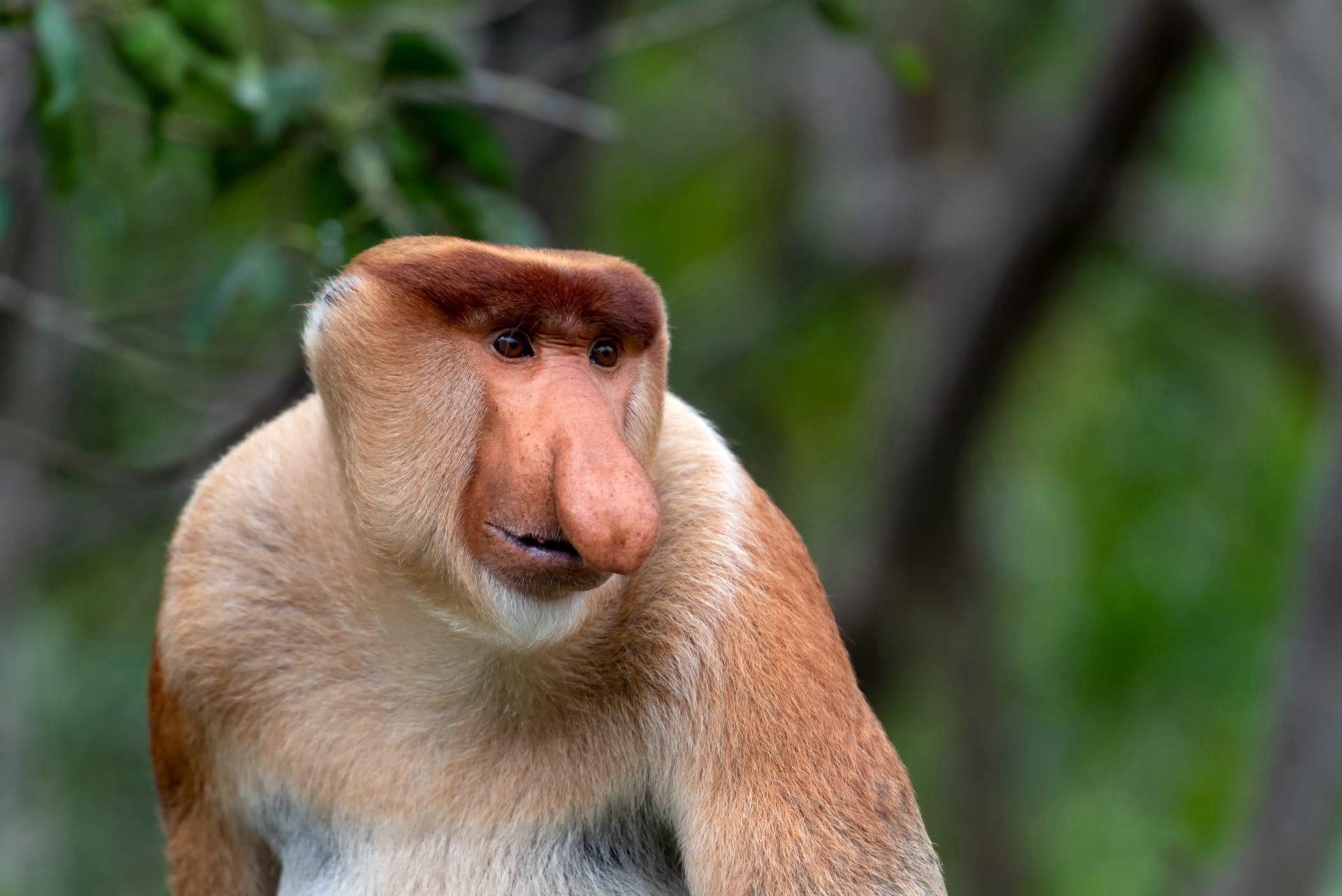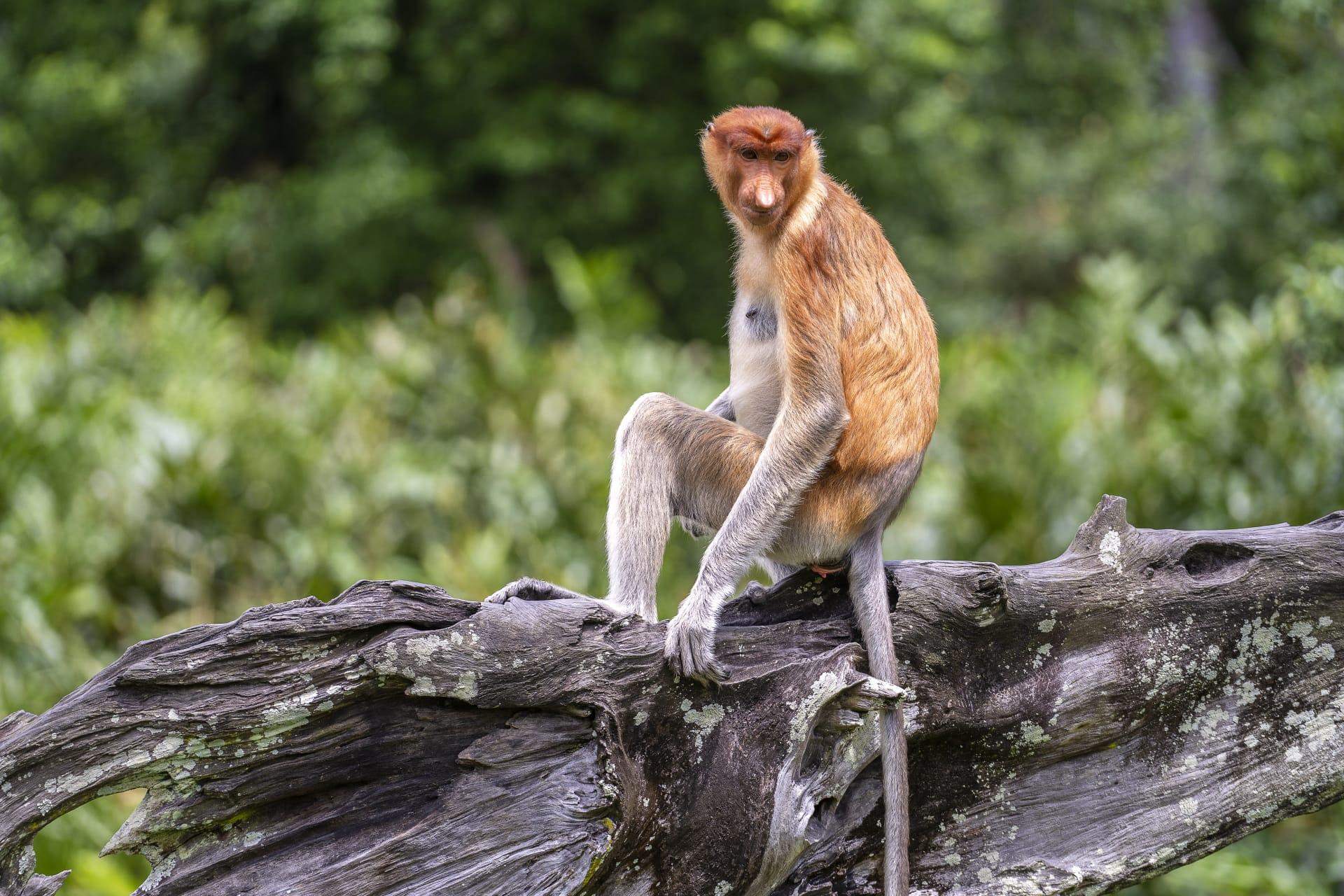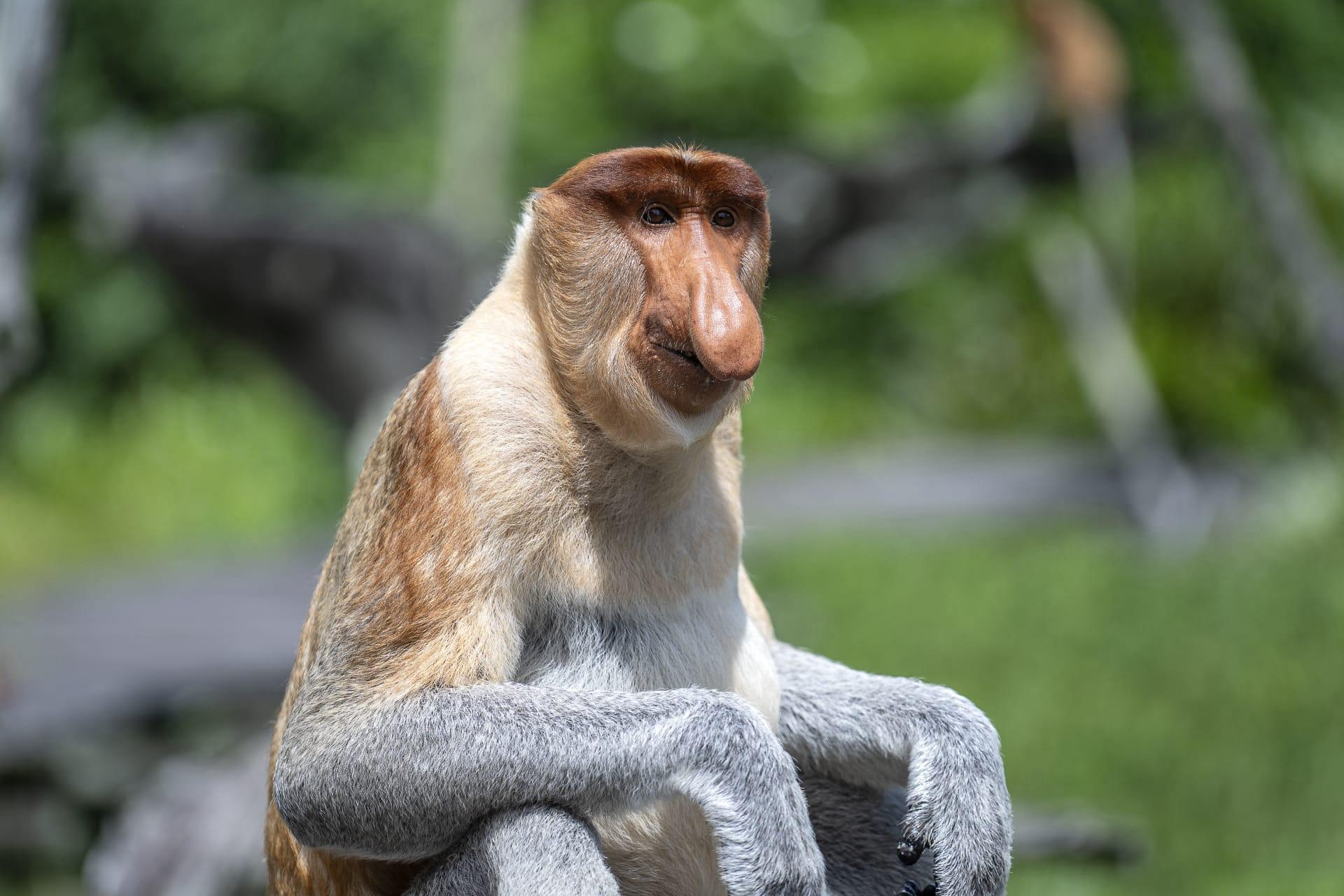Proboscis Monkey Characteristics
- Home /
- Mini Encyclopedia /
- Animal /
- Proboscis Monkey Characteristics
1
The Proboscis Monkey, scientifically known as Nasalis larvatus, showcases some fascinating physiological features. Adult males typically weigh around 24 kilograms, while females are lighter at approximately 12 kilograms. They display sexual dimorphism, with males being notably larger. These monkeys have a life expectancy of up to 20-25 years in the wild, with some living longer in captivity. What's truly remarkable about them is their coat, which varies from a light brown to a reddish-brown hue, with grey limbs and tail. Their stomachs are uniquely adapted to their diet, divided into chambers containing cellulose-digesting bacteria, crucial for their herbivorous lifestyle.
The most striking feature of the Proboscis Monkey is, of course, its large, pendulous nose, especially prominent in males. This nose can reach up to 7 inches in length. While its exact function is still debated, several theories exist. One suggests that the nose amplifies the monkey's vocalizations, aiding in communication within dense rainforest environments. It's also believed to be a sexual selection trait, with larger noses being more attractive to females. This distinctive nose is not just for show; it's an integral part of their social and communicative behavior.

2
Question: Why do Proboscis Monkeys have such large stomachs?
Answer: The large stomach of a Proboscis Monkey is a crucial adaptation to its diet. These monkeys primarily feed on leaves, along with fruits, seeds, and occasionally insects. Leaves are tough to digest due to their high cellulose content. To tackle this, Proboscis Monkeys have evolved a multi-chambered stomach, functioning similarly to a cow's. These chambers are filled with cellulose-digesting bacteria, allowing them to break down the leaves efficiently. This adaptation is essential for their survival, as it enables them to extract the maximum nutrients from their food. Additionally, this specialized stomach helps reduce the toxicity of certain leaves they consume, making them one of the few primate species adapted to a primarily folivorous (leaf-eating) diet.

3
The movement of Proboscis Monkeys is as unique as their appearance. They are excellent swimmers, a rare trait among primates. Their partially webbed feet aid them in swimming across rivers and mangrove swamps in their habitat. On land, they move quadrupedally (on all fours) and are skilled climbers. Despite their large size, they are surprisingly agile in the treetops, leaping up to 15 meters from tree to tree.
In terms of feeding habits, Proboscis Monkeys are primarily herbivorous. They consume a variety of leaves, seeds, and fruits, but their diet is predominantly leaf-based. They have a preference for young, tender leaves, as these are easier to digest and more nutritious. They also consume fruits, particularly during the fruiting season, which provides them with essential nutrients and variation in their diet. These monkeys have a highly selective feeding strategy, choosing food sources that maximize their nutrient intake while minimizing toxin consumption.

4
Proboscis Monkeys inhabit the mangrove forests, swamps, and riverine forests on the island of Borneo in Southeast Asia. These environments provide the necessary resources for their survival, including abundant food sources and trees for shelter. The unique ecosystem of the mangroves, with its tidal fluctuations and brackish water, is particularly suited to the Proboscis Monkey's lifestyle. They are also found in lowland rainforests adjacent to these wetlands, showcasing their adaptability to different forest types.
Reproduction in Proboscis Monkeys involves a harem system, where a dominant male mates with multiple females in his group. The gestation period lasts about 166 days, culminating in the birth of a single offspring. Newborns are born with a blue face and a dark fur coat, which changes to the adult coloration as they mature. The social structure is crucial for the survival of the young, as it provides protection and social learning opportunities. Females reach sexual maturity at about 5 years of age, while males mature later, around 7 years. This delayed maturity in males is likely due to the need for them to grow larger to compete for harems.

5
Book: "The Life of the Proboscis Monkey" by Dr. Elizabeth Bennett. This book, published in the United States in 2001, provides an in-depth look at the behavior, ecology, and conservation of the Proboscis Monkey. Dr. Bennett, a renowned primatologist, uses her years of field research in Borneo to offer insights into the daily life and challenges faced by these unique primates. The book also discusses the impact of habitat loss and conservation efforts.
Book: "Borneo's Gentle Giants: The Proboscis Monkey" by Michael Richardson. Published in 1998 in the United Kingdom, Richardson's book is a comprehensive guide to the Proboscis Monkey's habitat, diet, behavior, and reproduction. Combining scientific research with personal observations, the author paints a vivid picture of these primates in their natural environment. The book also addresses the broader ecological significance of the Proboscis Monkey within the Bornean ecosystem.